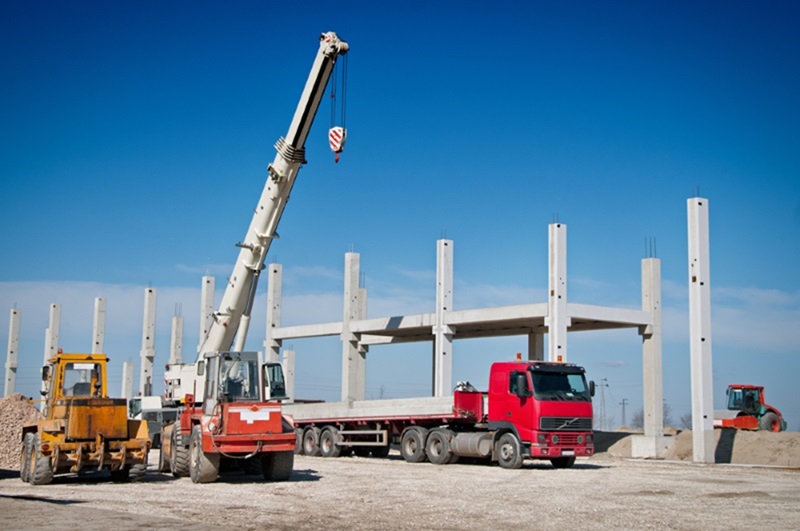Decoding the Cost Structure in Crane Hire Industry

When it comes to construction, efficiency and cost-saving are paramount. But, have you ever paused to wonder about the hidden costs that lurk beneath the service fees in the crane hire industry? What drives the pricing, and how can we better understand it to streamline our project costs and keep our construction budgets in check? In today’s blog post, we are going to unpack the complex cost structure embedded within the seemingly straightforward crane hire industry. From operational costs and depreciation to overheads and insurance, we will scrape layers off the surface and reveal the true picture of the crane hire industry’s cost structure.
The crane hire industry, while crucial to the construction sector, remains shrouded in obscurity for many, particularly regarding its nuanced cost dynamics. This opacity often results in customers paying more than they had budgeted on crane hires. So, it seems pertinent to ask – why is there such a gap in understanding? And more importantly, how can we bridge it?
But fear not. This comprehensive guide aims to decode these pricing mechanisms, educate consumers about the value they’re paying for, and perhaps, enable them to negotiate better deals.
Operational Costs and Their Influence on Pricing
Pricing in any heavy transportation industry such as crane hire is rarely as simple as a ‘flat-rate.’ Different cranes have different operational costs depending on the factors like the crane’s size, fuel consumption, and maintenance requirements. A crane that consumes more fuel and requires more regular maintenance will invariably cost more to hire.
Additional variables such as the rental duration and distance to the construction site can have significant impacts on the total cost. Simply put, the longer you rent and the further the crane needs to be transported, the more you are likely to pay.
Lastly, before you seal the deal, it’s worth looking into penalty fees. Some crane hire companies may charge clients for keeping their cranes idle, operating outside allowable hours or breaking the terms of the rental agreement.
The Elephant in the Room – Depreciation
Just like cars, cranes undergo depreciation. New cranes do not retain their purchase value over time. This depreciation is often built into the rental pricing.
There are two modes of depreciation taken into account: Firstly, physical depreciation – caused by the tangible wear and tear on the machine. This is normally calculated based on the lifespan of the machine and its parts.
Secondly, functional depreciation – resulting from the crane becoming outdated or obsolete due to technological advances or changes in industry requirements and standards. Both these depreciation types are added to the calculation of the crane hire cost.
Overheads – The Hidden Component
Overheads in this context refer to requisites such as licenses, permits, wages for operators and staff, equipment purchase, and even office rent. These are indispensable costs of doing business, often overlooked by clients.
The higher the overhead costs a company has, the greater the cost passed onto customers. However, always keep in mind, this might also denote a better service quality as the company is investing more in its services.
Significance of Insurance for Crane Hire Services
Insurance plays a valuable role in the cost structure of crane hire services, especially for those handling potentially risky operations. Depending on the nature of the work, some companies may require additional insurance to cover potential damage or injuries.
These costs can contribute significantly to the overall hiring costs. In general, any mishap or incident resulting in damage to the crane or the construction site may have consequential financial implications on the final crane hire bill.
Ups and Downs of the Market
As with any business, market conditions play a crucial role in the pricing strategy. Market trends, supply and demand imbalance, and competitive landscape can influence the rates considerably.
During the periods of slow economic activity or construction recession, prices might drop. Conversely, prices hike when construction is booming and demand for crane rental is high.
Regulatory Burden
Compliance with industry standards and regulations directly impacts the crane hire costs. These include safety training, inspections, and operator qualifications. Frequent updates or changes in regulations can push companies to invest in more training or update their equipment to stay compliant.
Conclusion
A seemingly simple equation of crane hire cost reveals itself to be a multi-faceted, complex puzzle with several factors influencing and driving the final pricing. Understanding these elements – operational costs, depreciation, overheads, insurance, market conditions and regulatory compliance – empowers us to better allocate our construction budgets and negotiate pricing more effectively.
As for crane hire companies, a transparent pricing structure that clearly shows the value proposition can create trust and generate sustainable business relationships. This might be the key to bridging the understanding gap between consumers and industry, and thereby, building a more economically efficient and productive construction landscape.
By stripping away the layers of ambiguity, we not only comprehend the cost of crane hire but also appreciate the value hidden within each cost layer. The secret lies in understanding these complexities and adapting them to our advantage. Happy hiring!